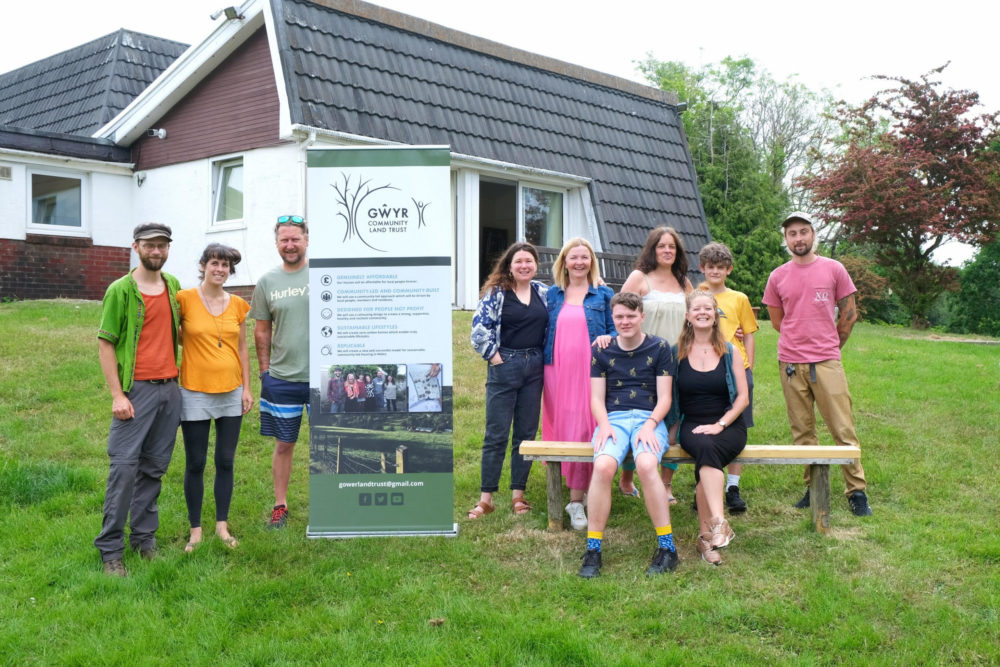First ever self-built housing community in Wales to be developed in Gower

A new housing development in Gower will be led and part built by the community to help local people who are facing the impact of Wales’ housing crisis.
In a first for Wales, 14 carbon-zero homes will be created using labour from its residents to build equity, an innovative approach known as ‘sweat equity’ following a grant from Welsh Government.
The project will provide affordable homes for people in the area who are currently housing crisis – including children living in temporary accommodation.
Consultation
Gŵyr Community Land Trust (Gŵyr CLT), with support from development agency Cwmpas, has been awarded almost £900,000.
Funding will contribute towards planning applications in the village of Bishopston, where Gŵyr CLT will build homes on a third of the 6-acre site if their application for planning is successful.
The wider community is being consulted on how they can best use the remaining two thirds of the land, with their ideas including a community orchard, green spaces and allotments for growing food. This will be available to everyone, not just the residents.
Claire White, from Cwmpas’ Communities Creating Homes Programme, explained: “By taking on a self-build approach, the residents are providing a solution to home ownership that would otherwise be out of reach. It will be the first time this approach, known as sweat equity, has been used in Wales and Gwyr CLT hopes to inspire other communities to do the same.”
Gŵyr CLT was formed in 2020 by local people who were “fed up” with the precarious private rented sector and long waiting lists for social housing. They recognised they were not alone in being unable to afford secure or suitable housing where they live and work, and worked together to solve a problem.
The CLT model will provide leasehold shared-ownership homes, while the CLT owns the freehold of the land with an asset lock that means it can never be sold for another purpose.
Local connections
Residents will not be able to acquire more than 65% of the leasehold of their homes and the property value is linked to the local average wage. Homes cannot be sold to anyone who is not in housing need and does not have a local connection, as defined by Swansea County Council policy.
Emily Robertson, volunteer board member of Gŵyr CLT, explained the difference the grant award could make: “This grant from Welsh Government demonstrates a real understanding of many people’s lived experience in Wales – housing insecurity, children living in temporary accommodation, parents’ wages being sucked up by expensive rents, lack of affordable housing due to Airbnb and second homes – and a real commitment to test a model of delivering sustainable and equitable housing, with the potential to transform thousands of people’s lives blighted by the housing crisis.
“As a small group of dedicated volunteers, we are delighted to see our hard work pay off and are excited for the next steps. We look forward to sharing our experience with other community-led housing groups across Wales”.
Gŵyr CLT is awaiting the response of its pre-planning application, with a view to submitting a full planning application by the end of 2025.
Support our Nation today
For the price of a cup of coffee a month you can help us create an independent, not-for-profit, national news service for the people of Wales, by the people of Wales.







That’s fantastic news, congrats to everyone involved!!
There is an assumption it will be built. These people are not from the community and close to 600 people who are in the community have signed a petition objecting to it.